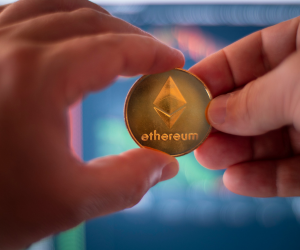Stablecoins are revolutionizing the global economic landscape. How do they affect emerging markets and face regulatory challenges? We explore these questions.

Stablecoins in Emerging Markets
Entering the exciting world of emerging markets, stablecoins are emerging as the stars of the financial show. But what makes them so irresistible? Think of them as a blockchain version of that magical piggy bank that always seems to maintain the same value over time.
A Safe Haven in the Financial Storm
Any veteran trader will tell you that emerging markets are a bit like a roller coaster without seatbelts: exciting, unpredictable, and sometimes leaving you wishing you hadn't eaten before getting on. Stablecoins offer stability, acting as anchors in stormy seas.
Inflation Protection: In economies where the cost of living increases at the speed of light, stablecoins maintain their value.
Ease of Access: They allow traders to access the global market without relying on fluctuating local currencies.
Remittance Optimization: Sending money home is safer and more efficient.
Facilitators of International Trade
In places like Buenos Aires or Nairobi, you can hear traders murmuring about "simple swap," the magical ability of stablecoins to facilitate trade across borders without the fear of sudden exchange rate fluctuations. Did someone say revolution?
Simplification of Transactions: Stablecoins enable direct trading without intermediate conversions.
Access to International Credit: They serve as globally interchangeable collateral.
Reduction of Operating Costs: Fewer intermediaries, lower fees.
The Rise of the Black Market and Illegal Activities
It's not all parties and prosperity; like in a mob movie, stablecoins also have their dark side. In markets with lax regulations, some illegal activities thrive under the umbrella of encrypted opacity, challenging governments and their attempts at control.
When investing or trading, understanding these dynamics of light and shadow is essential for any serious trader.
Regulatory challenges of stablecoins
If there is something that keeps regulators awake at night more than a teenager with access to a credit card, it's stablecoins. These currencies, halfway between stability and technological innovation, are forcing global regulations to dance to a rhythm for which they do not yet have the choreography.
The need for clear regulations
Stablecoins are like hot sauce in a world used to ketchup; they bring flavor and dynamism, but also a bit of chaos. This is where regulatory frameworks attempt to bring order amidst the commotion.
Preventing money laundering: Implementing KYC and AML standards is vital to maintain the integrity of the financial system.
Consumer protection: Ensuring that the coins are adequately backed to prevent bubble-type collapses.
Systematization of transactions: Regulating interoperability between different platforms for safer transactions.
A global puzzle
While around the globe regulators attempt to square the circle, the differences between national regulations make the regulatory landscape a Choose Your Own Adventure series at its best. What's exciting? Not all paths lead to the same end.
Tax treatment: Diversity in tax policies, ranging from aggressive taxes to exemptions pointing out incentives for stablecoin adoption.
Multilateral agreements: There is increasing pressure to coordinate policies beyond borders as if it were a trade treaty.
The fear of monetary sovereignty
In this race for power, the prevalence of stablecoins raises uncomfortable questions about who, or what, should control the value of our economies. In particular, fears arise about the potential displacement of national currencies in emerging markets. The battle between the digital and the traditional remains open.
While it is an exciting journey, focusing on stability means the margin for innovation seems to be constantly being readjusted. Imagination plays as much a role as implementation, as governments and cryptos continue to play their best cards.
Comparison Between Stablecoins and Fiat Currencies
In a boxing ring, stablecoins and fiat currencies face off, or more precisely, code against cash. But what really sets them apart? This economic duel is more than just a tennis match: it captures the soul of our modern economy.
Innovation or Tradition?
Fiat currencies, with centuries of history, represent the known, the safe. Stablecoins, on the other hand, epitomize the digital age, offering a blend of innovation and the familiar — a product derived from the innovative realm while maintaining reliability.
Stability vs. Volatility: Despite the name, the stability of stablecoins goes hand in hand with their backing, while fiat currencies are subject to central bank policies.
Global Accessibility: Stablecoins allow for smoother international trade, without traditional exchange barriers.
Transparency: Thanks to blockchain, transactions in stablecoins provide a level of transparency difficult to match.
The Challenges of Trust
In terms of trust, government backing for fiat still carries significant weight, leading some to compare them to a parachute: better to have it without needing it than the other way around. Stablecoins, on the other hand, rely on reserves that must be strictly audited to safeguard their integrity.
Audits and Oversight: Stablecoins need control systems to maintain their legitimacy, although trust builds over time just like with fiat.
Financial Sovereignty: Fiat currencies offer more control to the state, directly influencing economic policy.
A New Social Contract
At the end of the day, stablecoins not only propose a digital alternative: they advocate for a trust network based on technology and a new social pact tied to modernity expectations. As Satoshi Nakamoto would (supposedly) say: "The essence of trust in the economy is to advance at a pace our regulatory capabilities can keep up with, while our innovations challenge the status quo".
So friends, as the market continues to evolve, the real question is whether we are ready to embrace change or if we prefer to stay with the known even if it's boring. Whatever your choice, the future is already here.







